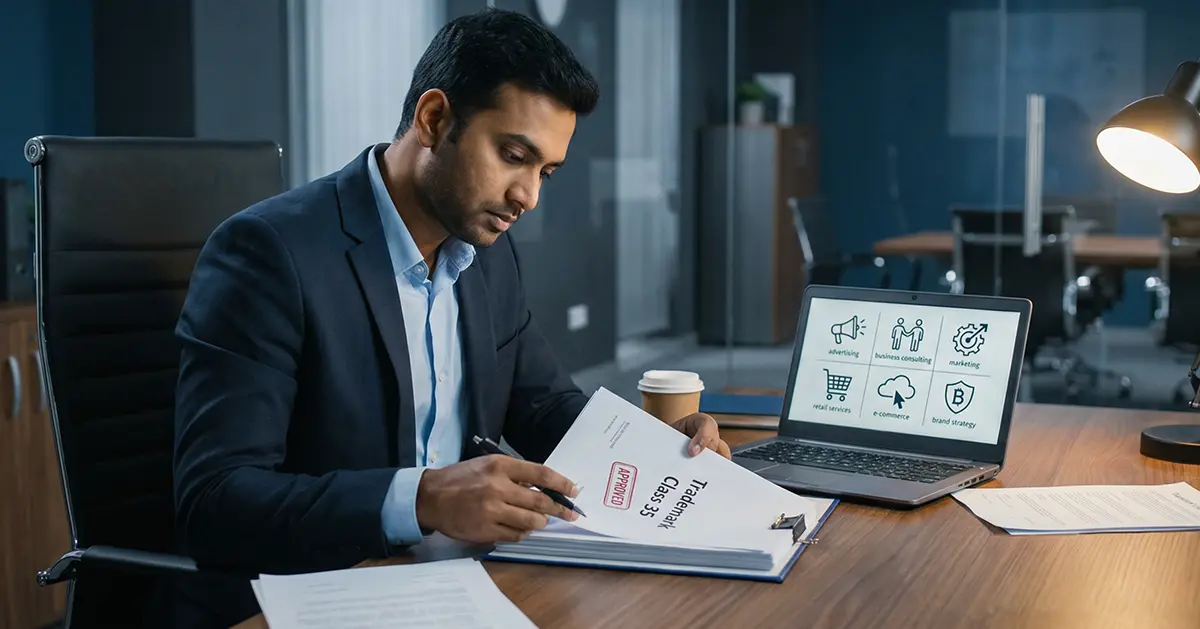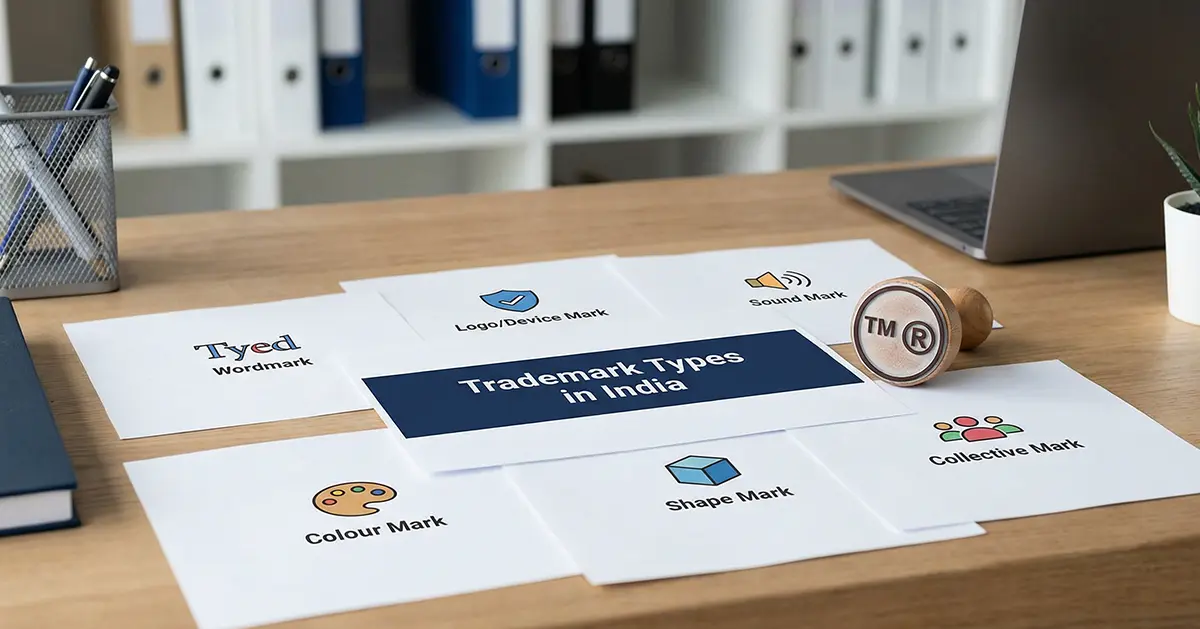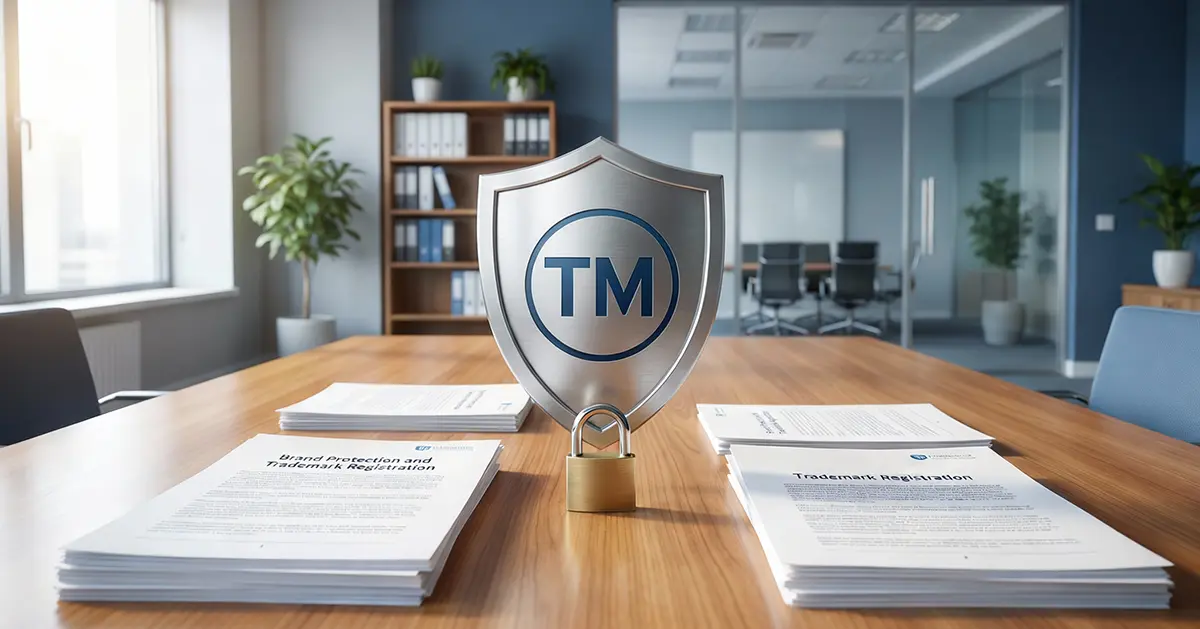
Unveiling the Difference: A Deep Dive into Trademarks and Copyrights
If you are running a company and working hard to create something unique, whether it is the look of your brand or some amazing original material, you have undoubtedly encountered the “Trademark vs. Copyright” dilemma. It is crucial to comprehend how these two vary and what they protect. Yes, it may become a little complicated, but the key objective is to keep your assets safe and uniquely yours.
Think about this: what would happen if a company started using your name or logo without your permission? That is not only inconvenient, but it might also harm your brand’s reputation and your hard work. But do not panic, there is a way to shield your business from this kind of problem.
Copyright and trademarks are essential tools in your company’s toolkit, acting as the unsung heroes behind the scenes. They take over to safeguard your creative works and the unique personality of your brand. To help you determine how each works and whether one—or even both—is ideal for your business, we will go into the specifics of each in this post. By the end of this session, you will know all you need to protect all the unique, cool things that set your business apart.
Recognising the Distinction Between Trademarks and Copyright
What is a trademark?
Let us examine trademarks in further detail first. Essentially, a trademark is the distinctive distinguishing mark of your business. It might be a catchy slogan or a unique logo. These elements help differentiate your brand and give it a distinct personality in the marketplace.
Trademarks are crucial because they make it simpler for customers to identify your products or services. It works like a beacon, guiding customers to you in a busy marketplace. By offering legal protection for these identifiers, trademarks ensure that when people see your logo or hear your slogan, they know it is associated with your brand and not someone else’s.
What is copyright?
Now let us discuss copyrights. A good starting point for protecting your creative product, whether it be a novel, software, image, or music, is a copyright. These legal safeguards are meant to make sure that your original works of art stay just that—original and only yours.
The scope of copyright protection is quite broad. It includes a variety of artistic and creative forms, such as literature, painting, and music. Whether you are a writer, musician, artist, or software developer, copyright laws are in place to stop unlawful exploitation of your creative works. It is a robust, undetectable barrier that ensures your rights are respected and safeguards your creative output.
Key Distinctions Between Copyright and Trademarks
Anybody who wants to protect their intellectual property needs to understand the differences between trademarks and copyrights. They serve different purposes and offer different forms of protection, despite their seeming similarities.
Protective Characteristics
Trademarks and copyrights offer entirely distinct kinds of protection. The primary goal of trademarks is to protect your company’s identity. This includes the name of your business, logos, taglines, and any other unique branding elements that distinguish your goods or services from those of your rivals. As an illustration, McDonald’s golden arches are a trademark as they are a distinctive symbol of the business.
But the purpose of copyrights is to protect creative works. Examples of the expression of ideas include film, music, art, and books. The specific recording and composition of a song, for instance, are protected by copyright, not the band name or title, which are subject to separate trademark protection.
Costs Associated With
The costs of obtaining and maintaining trademarks and copyrights differ. Trademark registration often involves application costs, and the cost of these fees may vary depending on the number of categories the mark will be registered in. Trademark maintenance requires renewal payments and, sometimes, legal expenses to enforce trademark rights.
Copyrights, on the other hand, are usually cheaper. In many nations, copyrights are automatically awarded at the time of creation and do not usually require registration. However, copyright registration might have additional legal benefits and registration fees.
Duration of Protection
The duration of protection that trademarks and copyrights offer differs substantially as well. Trademarks should be able to last forever as long as they are in use and the necessary renewal fees are paid. Thus, for as long as a brand is in use, a trademark may protect it.
Copyrights have a limited lifespan; typically, they endure for the lifetime of the inventor plus a certain number of years (often 50 to 70 years, depending on the nation). After this period, the work enters the public domain, allowing anybody to use it without any limitations. This protection has a temporal restriction, as opposed to the possibility of perpetual protection under trademark law.
Examining Copyright and Trademarks: Legal Procedures
Getting a Trademark Registered
The process of registering a trademark consists of several crucial steps. The first step is to do a thorough research to ensure that your proposed trademark does not infringe upon any already-existing trademarks. This search could be challenging, but it is necessary to avoid any future legal problems. Following clearance, you submit an application to the appropriate trademark office, including details on the trademark and the goods or services it will stand for.
Next, the application is reviewed to ensure that it conforms with all relevant regulations, including those concerning uniqueness and non-deception. Once approved, your trademark is open to objection, allowing anybody who believes it infringes their rights to challenge it. If there are no objections or you are able to get over them, your trademark will be registered.
In contrast, copyright registration is simpler. Even if a work’s copyright is always protected from the time of creation, registering it might have legal advantages including making infringement claims easier to handle. A copy of the work, an application, and money must be sent to the copyright office in order to register. After processing, the copyright is registered and you receive a certificate of registration.
Law Enforcement and Legal Actions
The initial step in pursuing trademark rights is often to send stop and desist letters to the infringer. If these do not work, trademark owners may be sued, in which case they will have to prove that their mark is authentic, that they are the lawful owner, and that the infringement causes confusion. A successful action may result in monetary damages, injunctions to stop the infringement, and sometimes reimbursement of legal fees.
Stop and desist letters are often the first step in the enforcement of copyright infringement. Nonetheless, under the Digital Millennium Copyright Act (DMCA), copyright holders can also request that service providers remove content linked to infringement from the internet. Among other remedies similar to those in trademark disputes, copyright owners may file a lawsuit for statutory damages and legal expenses if this does not resolve the issue.
Global Aspects
When it comes to international protection, copyrights and trademarks both have challenges. Trademarks must be registered in every country where protection is desired due to their territorial character. International accords like the Madrid Protocol, which allow a single application to be submitted for protection in many countries, simplify this procedure.
While copyrights are automatically protected in the country in which they are created, they are also subject to international accords like the Berne Convention, which ensures that works are protected in all member countries. However, because the extent and method of protection may vary from country to country, international copyright issues require a cautious approach.
Understanding these legal procedures and worldwide considerations is essential to effectively preserving and protecting your intellectual property throughout the world.
Which Is Better for You: Trademark Protection or Copyright Protection?
Evaluating Your Needs
You may be wondering, “Do I need a copyright or a trademark?” When deciding whether to pursue trademark or copyright protection, it is important to consider the qualities of your assets, the objectives of your business, and your financial limitations. If protecting your brand identification, including your company name, logo, or slogans, is your primary priority, then trademark protection is the ideal option. It is quite important to make sure that your brand is distinct in the industry and not confused with others.
But if you are more concerned with protecting unique creative works, such software, artwork, music compositions, or essays, then copyright protection should be your first priority. Copyrights are necessary if you want to maintain control over how your creative works are used and distributed.
Your decision should also align with the goals of your business. For example, if developing a distinctive brand is a key element of your business strategy, it makes sense to invest in trademark protection. However, if your company’s main focus is creating and promoting original content, copyright protection is more crucial.
Budgetary problems are also quite significant. It might be more costly and difficult to register a trademark, especially if you wish to have protection in many countries. However, registration offers extra legal benefits. In contrast, copyright protection is usually less expensive and is applied promptly at the time the work is generated.
Also Read: Importance of Trademark Registration for Business
Is a copyright or trademark necessary?
The following checklist can help you make a decision:
- Defending a Brand Name or Logo: If you have a unique logo or want to protect the name of your business, product, or service, you must have a trademark.
- Defending an Original Work of Art: Whether you have created software, written a book, produced music, or created artwork, you want to be able to manage how it is used and distributed. This is why you want copyright.
- Budgetary Considerations: Assess your spending strategy. Trademark registration can be costly and requires renewals, although copyright protection is typically less expensive.
- Business Goals: Ensure that your decision aligns with your business plan. If market awareness is crucial, pay attention to trademarks. If your main company is producing and overseeing creative content, copyrights will be more advantageous to you.
- Long-Term Protection: Consider the consequences over the long run. While trademarks can exist forever with proper maintenance, copyrights have a limited lifespan yet frequently last long enough to accomplish most goals.
By carefully considering these aspects, you may select the type of protection that best meets your needs and goals.
Similarities Between Copyright and Trademarks
Despite their differences, copyrights and trademarks share certain important similarities that should be acknowledged:
Intellectual Property: Both kinds of rights are included in intellectual property (IP) rights. They are legal recognitions that certain types of mental works are property and can be protected as such. This protection is crucial for promoting innovation and creativity since it ensures that artists and businesses may make money off of their works.
Protection and Registration: Trademarks and copyrights both offer legal protection, and registration can bolster them. A work is inherently protected by copyright at the time of creation, but there may be additional legal benefits to registering it. In contrast, registration is required for trademark protection to be fully effective. Both procedures include a few stages, such application and maybe enforcement through legal action.
Application of the Law: Both are subject to intellectual property law, which can be enforced through both civil and criminal law. The laws governing them are interpreted and carried out by courts, who seek to balance the interests of the general public, businesses, and artists.
Costs of Copyright and Trademarks: Setting a Budget for Security
The financial requirements
The costs of trademark registration must be considered, since the filing fees vary depending on the jurisdiction and the number of categories the brand is registered under. A sizable amount may also be included in the budget for expert legal guidance. It is critical to consider trademark maintenance, which encompasses renewal costs and even the cost of a brand’s legal defence.
Copyright registration costs are frequently less expensive. There are costs associated with registration, although they are often less than those associated with trademarks. If you retain legal counsel for registration or to handle copyright infringement charges, however, these costs may add up.
Return on Financial Investment
Investing in trademark and copyright protection is primarily done to ensure legal compliance and to generate a return on investment (ROI). Because they may significantly boost a brand’s reputation and value, trademarks are a powerful tool for business success. Benefits of having a strong, well-protected brand include increased market presence and customer loyalty, both of which are essential in the competitive business world of today.
On the other hand, copyrights ensure that you may profitably make money off of your artistic products while maintaining their integrity. Because of this protection, you have authority over how your work is used, potentially leading to revenue from sales, licensing agreements, and other revenue-generating tactics.
Finally, even though there are costs associated with preserving these intellectual property rights, the long-term benefits of protecting and making money off of your brand and creative works usually outweigh the original investment.
Ending Note
It is important to realise that while trademarks protect your brand identity, like your company name and emblem, copyright protects your unique creative works, like books and music. The ideal alternative for you will depend on whether you want to preserve your original material or the unique personality of your company. Take into account your particular needs and business objectives to make an educated decision. Both copyrights and trademarks are necessary for the growth and success of your company as well as for safeguarding your work.




